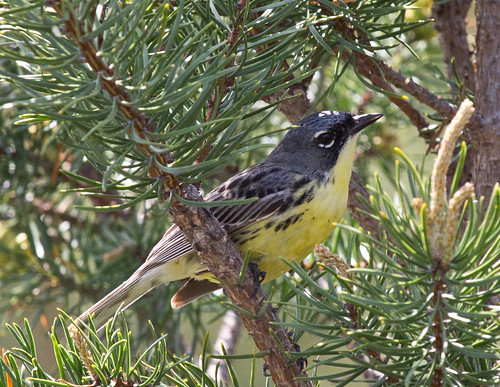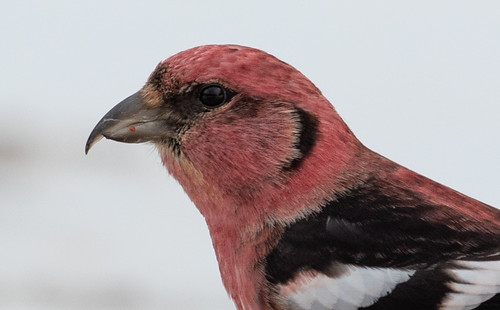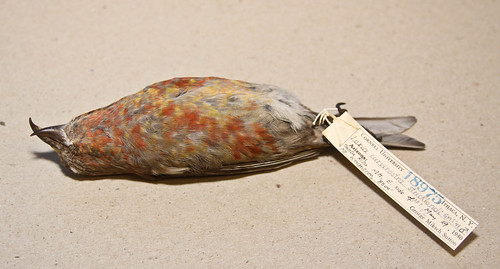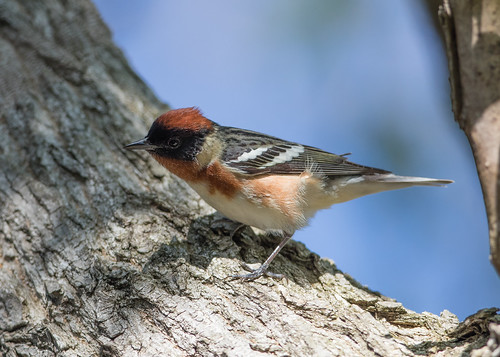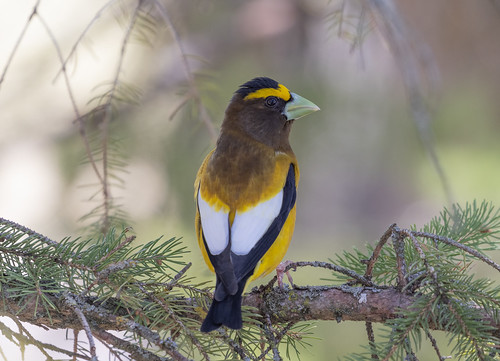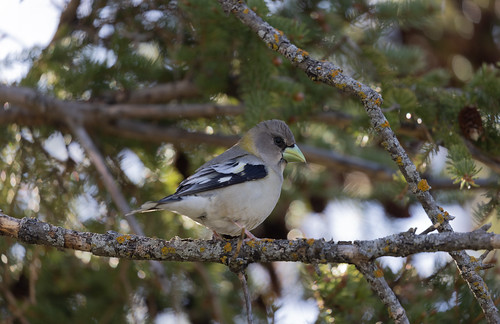The relationships between birds and plants are wonderfully complicated. Just about every bird I’ve ever seen in my yard has spent at least a little time in my conifer trees. But a few birds are so specialized that they require conifers —sometimes even a single species of conifer—during an essential part of their annual cycle.
For example, Kirtland’s Warblers are extremely tied to jack pines. On their wintering grounds in the Bahamas, during migration, and even on their breeding territories they find plenty of insect food from a variety of plants, but they nest exclusively on the ground beneath the sheltering bottom branches of jack pine trees. Males aren’t too fussy, but females are—one won’t even consider nesting until she finds a jack pine between about 5 and 15 years old and roughly 5–15 feet high. Too young and a tree won’t provide enough shelter for the nest; too old, and the bottom branches have fallen off, again leaving the nest too exposed.
 |
| Ideal Kirtland's Warbler habitat near Grayling, Michigan |
Jack pine cones open only when subjected to extreme heat—historically from natural wild fires. Now, with so many humans encroaching on their small natural range in northern Michigan, Kirtland’s Warblers depend on extensive management to ensure there are always stands of acceptable jack pines for them.
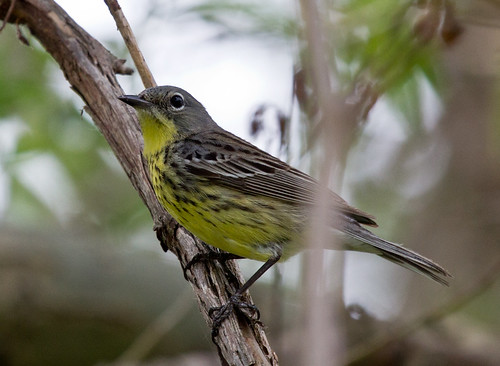 |
| This fussy female Kirtland's Warbler was photographed at the Black Swamp Bird Observatory's Magee Marsh in Ohio during migration. No jack pines available, but she's not nesting yet anyway. |
Crossbills nest in conifers, but it’s their feeding habits that make them such extreme conifer specialists. They get their name from the way the lower bill crosses under the upper, either toward the left or toward the right—an adaptation that allows them to insert the bill between cone scales and then twist the lower mandible towards the side to which it crosses, enabling the bird to extract the seed at the bottom of the scale with its tongue.
Whichever way a bird’s lower bill crosses determines the side of its face that must be close to the cone. Intriguingly, just about exactly half of all Red Crossbills are left faced and half right faced, but about 75 percent of all White-winged Crossbills are right faced. That difference reflects their cone choices.
White-winged Crossbills specialize on spruce and tamarack cones, which tend to be smaller and less sturdily attached to the branches than pine cones. White-winged Crossbills feed on cones still adhering to the trees, but if a section of cone is too hard to access for, say a right-faced bird, it can simply snip off the whole cone and rotate it in its foot, to get out all the seeds. White-winged Crossbills also feed on cones that have fallen to the ground, again easily rotating the cones to extract the seeds. In this species, the lower bill crosses to the right in three times as many individuals as the other way around—about the same percentage we’d expect assuming the way a bill crosses is due to a simple dominant or recessive gene.
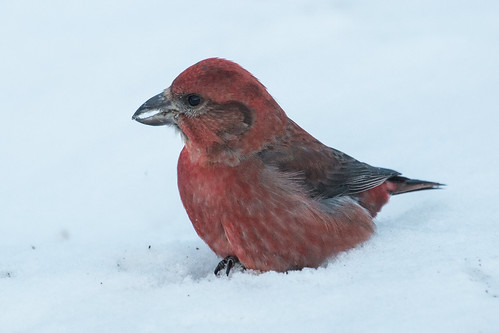 |
| Yeah, Red Crossbills usually feed in pine trees. This one is picking up grit to help it digest those pine seeds and give it some minerals the seeds lack. |
In contrast, Red Crossbills specialize on pine cones, which usually remain firmly affixed to the tree even as the seeds are pulled out, so Red Crossbill individuals miss a lot of seeds under scales that happen to be too close to the branch to access, depending on which way their bill crosses. Crossbills hang out in flocks, and for them to maximize the number of seeds for the entire flock, it makes sense that the bill crossing is 50/50, though scientists have not figured out how this is controlled genetically.
When I worked at the Cornell Lab of Ornithology, I checked out the specimens in their collection. In Red Crossbills, it’s supposed to be 50-50, and sure enough, 22 of 41 Red Crossbills crossed one way, 19 the other. But in White-winged Crossbills, a much higher percentage of birds have lower bills crossing to the right than to the left—in the Cornell birds it was 32 of 46 birds, or 70 percent. This kind of ornithological trivia is a little too specialized to ever make it into the TV game Jeopardy!, but I think it’s fascinating.
Some birds depend on conifers for food even though they don’t eat seeds at all. Tennessee, Cape May, and Bay-breasted Warblers feed voraciously on an insect that feeds on spruce and fir needles in northern forests: spruce budworm.
 |
| photo by Jerald E. Dewey, USDA Forest Service, http://www.forestryimages.org/browse/detail.cfm?imgnum=2252020 |
This moth larva, considered a serious pest by foresters, is so important for these birds when feeding young that their populations fluctuate with spruce budworm population cycles. Evening Grosbeaks also depend heavily on spruce budworms for feeding their nestlings.
The more I learn about the fascinating connections between birds and plants, the richer my world becomes.
